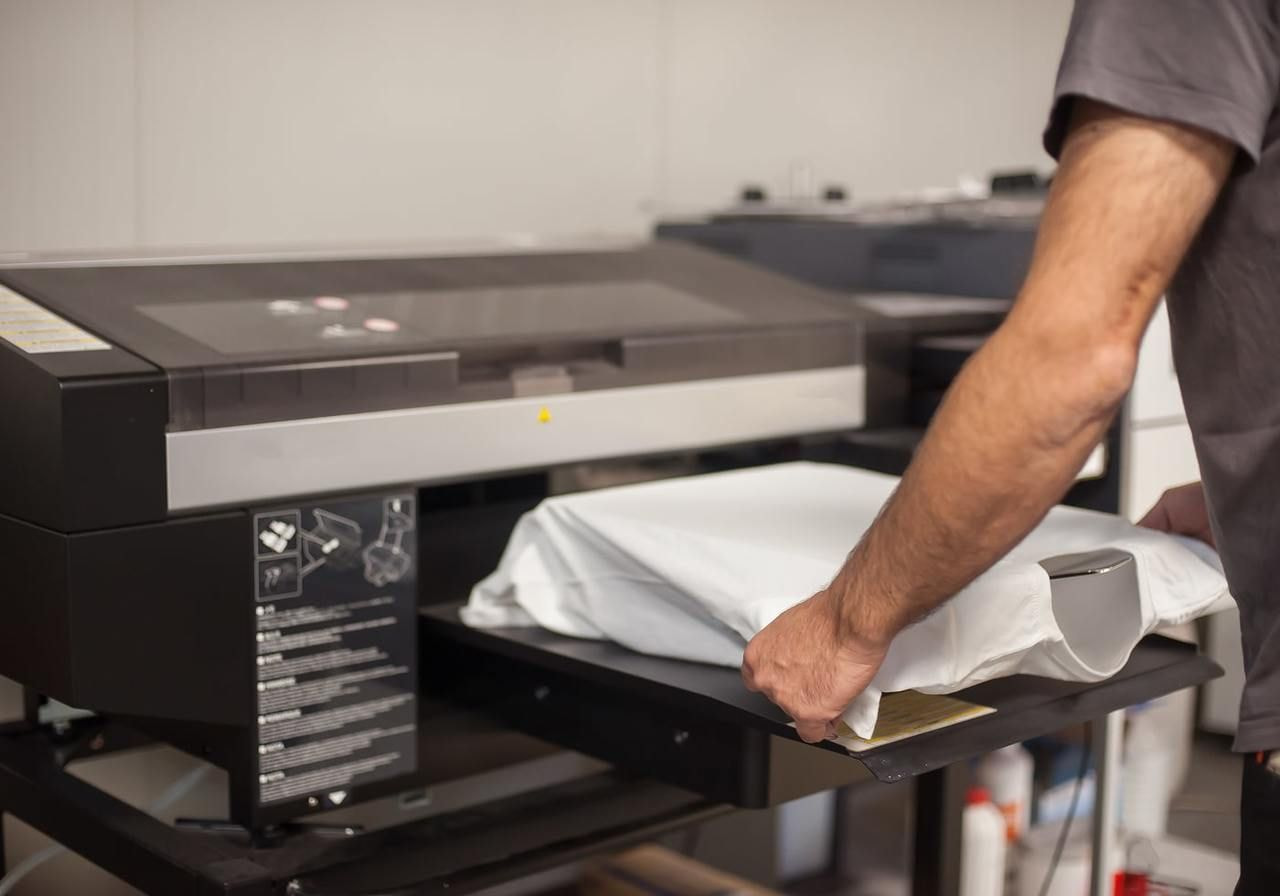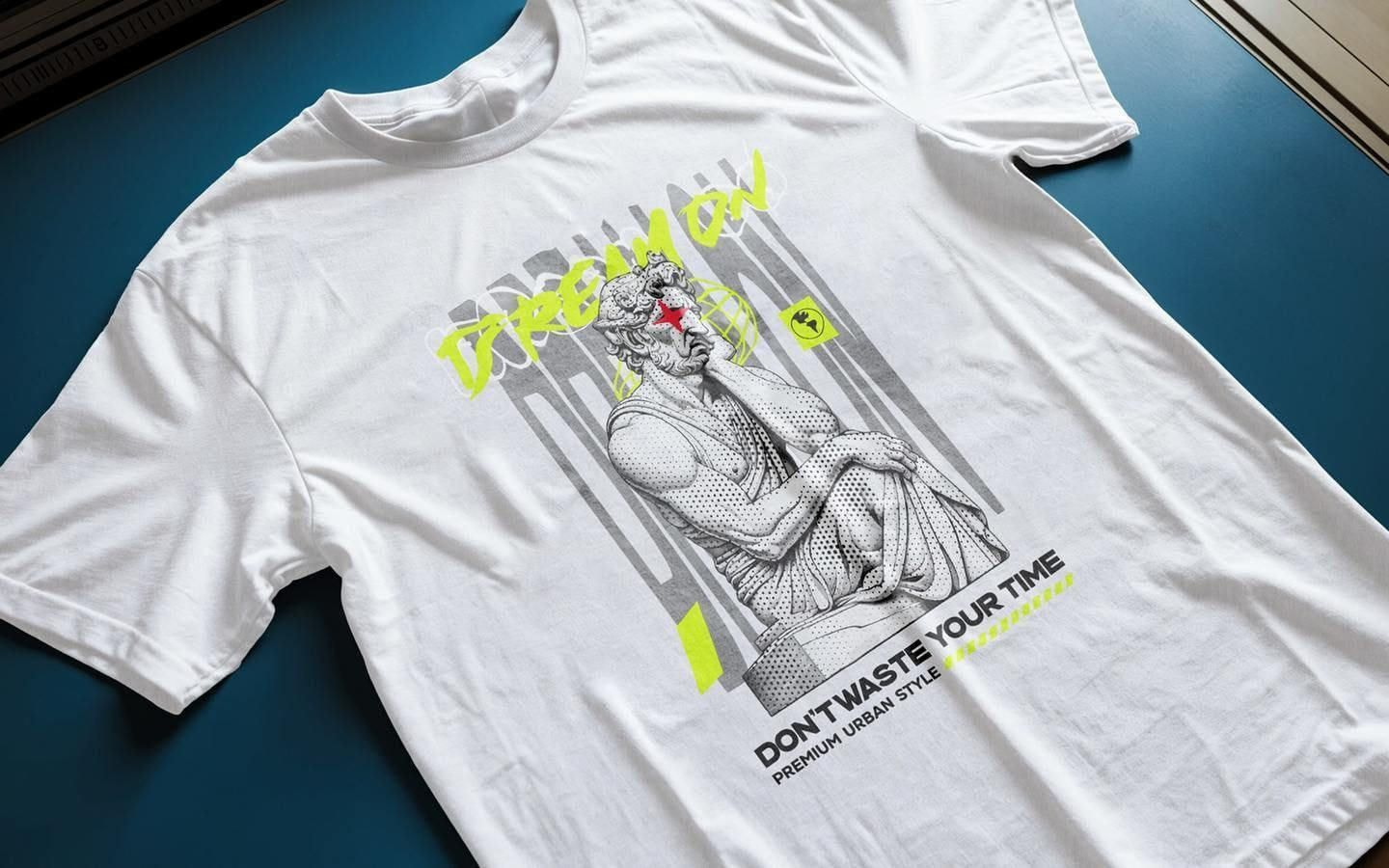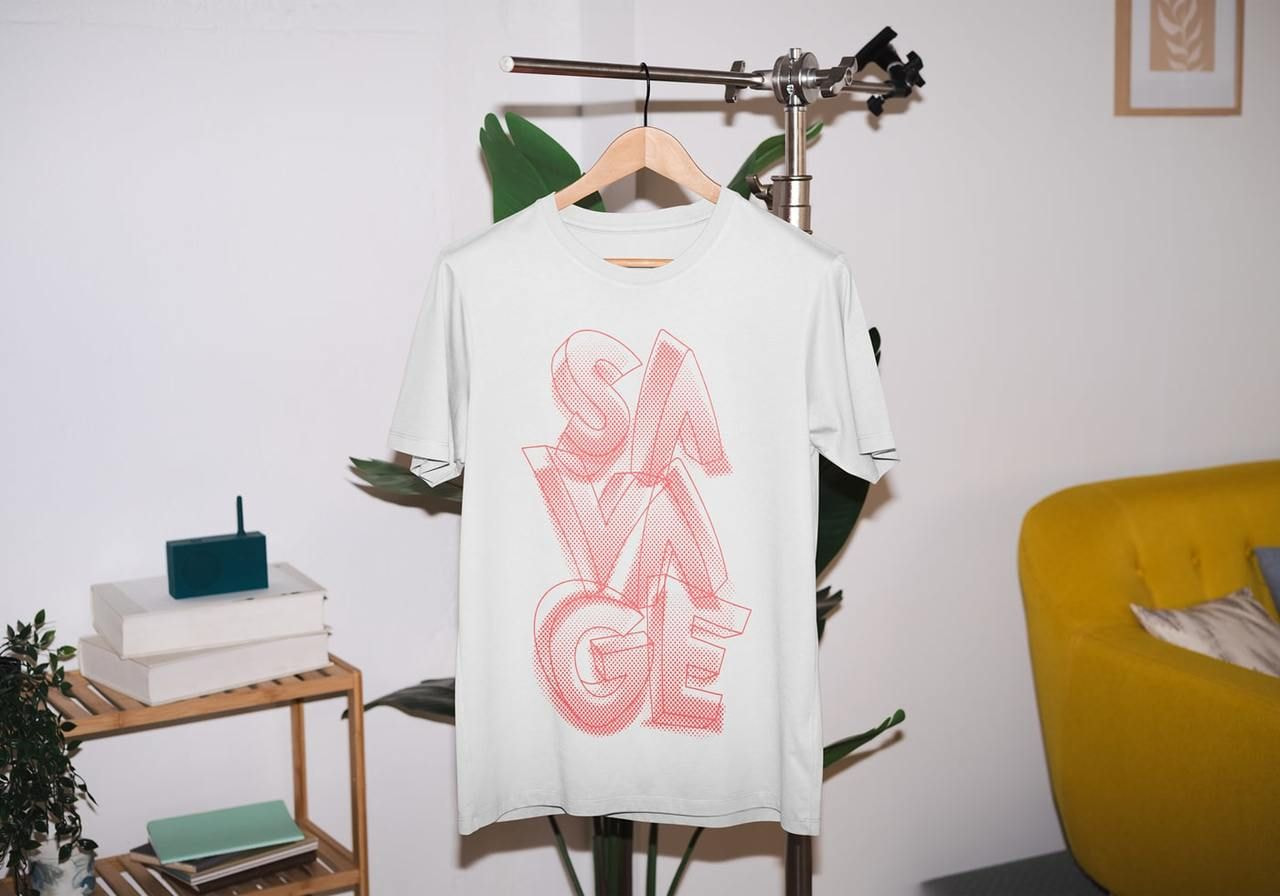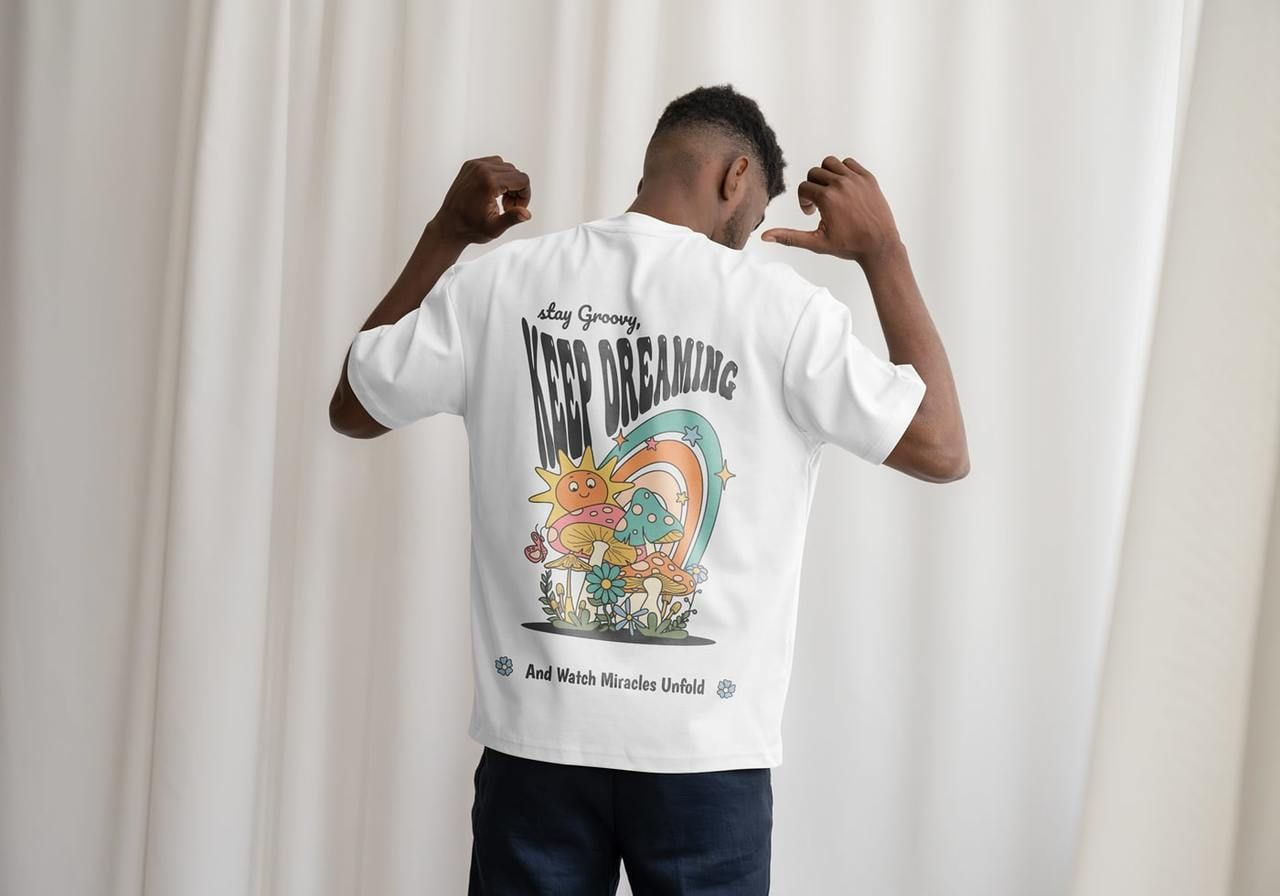Table of contents
Most sellers earn between $3 and $8 profit per shirt, or 30-50% profit margins when priced right. That’s enough to turn a side hustle into a steady income – or even a successful t-shirt business – if you manage production costs, set a smart pricing strategy, and track your numbers carefully.
With Print on Demand (POD), launching a custom t-shirt business online is low-risk and fast to start. Printful has supported thousands of entrepreneurs in the t-shirt industry – from first-time sellers to established brands scaling their t-shirt business into a full-time income.
What factors influence custom t-shirt profit? Cost breakdown
Before you ask how much money custom t-shirts can make, learn what eats into your earnings. Every shirt business has 3 core expenses:
1. Production costs

Production costs include the base price of a blank t-shirt plus your chosen t-shirt printing method. On Printful in 2026, costs look like this for size M t-shirts with one print area (prices vary for different sizes and more decoration areas):
-
Gildan 5000 – $9.25 (budget option)
-
Bella + Canvas 3001 – $11.69 (premium staple)
-
Stanley/Stella Organic – $14.25 (eco-friendly option)
-
Comfort Colors 1717 – $15.29 (popular pigment-dyed)
Pro tip: With Printful Growth, you can cut production costs even further, giving your t-shirt business more room for profit.
2. Shipping costs
Shipping costs directly affect your t-shirt pricing strategy. Domestic shipping expenses at Printful usually start at $4.49. International shipping is higher, so factor in delivery zones when you price t-shirts.
Check the full list of current shipping prices on the Printful Shipping page, which lists costs by product and region.
3. Transaction fees
Every platform takes a small cut from your sales, so include these transaction fees in your total cost calculation:
-
Etsy: 6.5% transaction fee, ~3% processing fee, and $0.20 listing fee (Etsy fees guide)
-
Shopify: No fees with Shopify Payments; 0.5-2% with outside providers (Shopify cost guide)
-
WooCommerce: Varies by payment gateway and region (free to install)
Expect around $2 per sale in t-shirt order transaction fees across most sales channels.
Cost-estimate table
Let’s look at the total cost estimate and net profit of four of the most popular blanks in the Printful Catalog. We’ll use US domestic shipping ($4.49 per shirt) and Etsy’s standard fees:
-
6.5% transaction fee
-
3% + $0.25 payment processing fee
-
$0.20 listing fee per product
|
T-shirt |
Production |
Shipping (US) |
Etsy fees |
Total costs |
Retail price |
Net profit |
|
Gildan 5000 |
$9.25 |
$4.49 |
$2.35 |
$16.09 |
$20.00 |
$3.91 |
|
Bella + Canvas 3001 |
$11.69 |
$4.49 |
$2.83 |
$19.01 |
$25.00 |
$5.99 |
|
Comfort Colors 1717 |
$15.29 |
$4.49 |
$3.30 |
$23.08 |
$30.00 |
$6.92 |
|
Stanley/Stella Organic |
$14.25 |
$4.49 |
$3.30 |
$22.04 |
$30.00 |
$7.96 |
Lower production costs make it easier to set competitive prices, but often leave less room for profit.
Higher-cost blanks allow for a higher retail price and stronger profit margins, which can increase long-term growth.
What’s the average profit margin in a t-shirt business?
Want to know if your t-shirt business is healthy? Look at your profit margins – they show how much money you actually keep after expenses.
Gross profit vs. net profit
-
Gross profit is your revenue minus production costs, shipping expenses, and transaction fees
-
Net profit goes a step further, subtracting marketing, website, and tax costs to show what your t-shirt business truly earns
Tip: Use both metrics to understand your t-shirt profit margin. Gross profit helps track efficiency, while net profit reveals long-term sustainability.
Typical ranges
Most t-shirt businesses see average profit margins between 30 and 50%.
A budget shirt at a lower selling price may land near the bottom of that range. Premium shirts with higher perceived value can push you toward the top.
Here’s a quick example:
Sell 100 t-shirts at $25 each = $2,500 revenue.
If your total costs per shirt average $17, your gross profit is $800. That’s about a 32% t-shirt profit margin.
How to increase your custom t-shirt profit (step-by-step)
Making your first sale feels great. But turning a few sales into a successful t-shirt business takes a clear plan. Follow this five-step framework to boost your profit margins, strengthen your pricing strategy, and scale your custom t-shirt business sustainably.
1. Calculate costs and set margin goals
Profit begins with math. To know your true custom t-shirt cost, add up:
-
Production expenses – the base cost of your blank plus printing or embroidery
-
Shipping costs – what you pay to deliver each order (domestic and international)
-
Transaction fees – marketplace or payment processing charges, often overlooked
Once you know your total costs, it’s time to set your profit margin. But how do you decide?
-
Study your market. Most t-shirt businesses aim for a margin between 30%-50%. Lower margins help when you’re competing on price, higher margins work with a more established brand, or when your custom t-shirts offer a stronger perceived value.
-
Consider your business model. If you rely on paid ads, you’ll need a higher margin to cover those marketing costs. If you sell through word-of-mouth or organic SEO, you can afford to keep margins slimmer.
-
Define your goals. Want to grow fast? You might lower your margin to drive t-shirt sales volume. Want to build a premium brand? Price higher, aim for fewer sales but higher profit margins.
Pro tip: Revisit your pricing strategy every quarter. Adjust for changing production costs and platform fees to keep your t-shirt profit margin healthy.
2. Test products on POD platforms like Printful
Many new sellers order in bulk too soon.
Instead, start by uploading a few t-shirt designs through Printful’s Design Maker or other t-shirt design software and testing them with your audience. The goal isn’t perfection – it’s proof of demand.
Starting a print-on-demand business is a perfect testing ground: you only pay for production after a customer orders. No upfront costs, storage, or risk of unsold inventory.
Try testing different t-shirt types:
-
Graphic-focused custom tees – bold artwork, logos, or slogans
-
Niche custom t-shirts – designs tied to hobbies, local pride, or subcultures
-
Personalized t-shirts – names, dates, or custom text that adds a personal touch
-
Eco-friendly options – organic cotton or recycled fabrics for eco-conscious buyers
Testing lets you see what resonates before scaling. You’ll learn which t-shirt printing styles connect with your target market, which sales channels drive results, and how much money your custom t-shirts make in real conditions.
3. Optimize pricing and marketing
Even the best t-shirt designs won’t sell if the price feels off. Your pricing strategy decides if you attract buyers and keep healthy profit margins.
Once you’ve calculated your custom t-shirt cost – production, shipping, and transaction fees – and set a profit margin goal, decide how to actually price your shirts.
There are four proven pricing strategies:
-
Cost-plus pricing
Simple math: take your total costs and add a percentage for profit. For example, if one shirt costs $18 and you want a 40% margin, set the selling price at $30. -
Value-based pricing
Price according to how much your target audience thinks your custom shirts are worth. This works best if your brand, niche, or t-shirt designs stand out and justify higher t-shirt prices. -
Competitor pricing
Look at what other t-shirt businesses in your niche charge. You can price slightly higher if your designs or quality justify it, or slightly lower if you’re trying to break in. -
Psychological pricing
Minor tweaks can influence perception. Listing at $24.99 instead of $25.00, or offering bundle discounts, can make buyers feel like they’re getting more value.
Pricing alone won’t drive sales – people need to see your products. That’s where setting up a good marketing strategy to promote your business comes in.
How to market your shirts:
-
Search engine optimization (SEO):
Use relevant keywords like ‘funny t-shirts’ or ‘eco-friendly custom t-shirts’ in your product titles, tags, and descriptions. This helps your online store show up when buyers search for styles they want. SEO is slow to build but brings in consistent traffic without cutting into your net profit. -
Social media marketing:
Instagram, TikTok, and Pinterest are built for visuals – perfect for showcasing t-shirt designs. Short-form videos, customer photos, and behind-the-scenes content keep your target audience engaged. Posting regularly creates recognition and repeat demand for your custom t-shirts. -
Paid ads:
Facebook and Google Ads let you speak to a narrow target market – like dog lovers, gamers, or local communities. Start small with budget tests, track which ads bring a profitable t-shirt sales volume, and reinvest in the winners. Ads cost money, but when optimized, they can scale. -
Influencers and user-generated content:
Influencer marketing is powerful. Influencers already speak to your niche; a photo of them in your custom tees builds trust. You can also ask buyers to share photos of themselves in your shirts. User-generated marketing creates social proof and authentic marketing material. -
Email marketing:
If you run your own online store, email is one of the most reliable sales channels. Offer a small discount for signups, then follow up with new t-shirt designs, seasonal promotions, or bundles. Email builds relationships and keeps happy customers coming back, boosting long-term profit.
4. Track profit and performance by sales channel
Your numbers tell the truth about your custom t-shirt business. Tracking shows whether your custom t-shirts make a real profit and which sales channels yield the best returns.
Key numbers to monitor:
-
Net profit – your revenue minus production, shipping costs, and transaction fees. This shows what you really keep.
-
Sales volume – how many shirts you sell in a given time. A high volume with low margins can still create strong profit.
-
Sales channels – compare results between Etsy, Shopify, Amazon, or your own online store. Some channels drive steady buyers, others take bigger cuts.
If your net profit per shirt is low, review your pricing strategy, switch to a cheaper blank, or refocus on organic SEO instead of ads.
Tracking also helps you understand how much money your custom t-shirts make over time – not just per sale.
5. Scale your t-shirt business strategically
Growth without planning drains profit. Once you’ve proven that your custom t-shirt business is profitable, it’s time to scale.
-
Reinvest profits:
Use earnings from early t-shirt sales to fund growth. Reinvest in ads, influencer campaigns, or new t-shirt designs. Small, steady reinvestments are safer than betting everything on one big campaign. -
Expand product range:
Offer more than one style. Add hoodies, sweatshirts, mugs, or bundles with your own custom t-shirts. Expanding increases your average order value and makes it easier to keep happy customers returning. -
Explore new printing methods:
Adding embroidery or sublimation to your lineup can attract new buyers. Some audiences prefer the premium look and durability these methods bring, despite the price difference. -
Grow into new sales channels:
Don’t rely on a single platform. Pair your online store with marketplaces like Etsy or Amazon. Moving into larger online retail spaces widens reach, but each channel has different fees and margins. Compare carefully before committing. -
Plan for scale:
Scaling without a plan can burn through cash. Create a solid business plan to track upfront costs, marketing budgets, and delivery timelines.
Main takeaway: Scaling a custom t-shirt business isn’t about luck – it’s about control. When you measure costs, refine pricing, and expand strategically, you’ll transform a few sales into a sustainable, profitable t-shirt brand.
Real seller income stories
Wondering how much money custom t-shirts can make in practice? These brands prove you can turn custom t-shirt ideas into real income with the right niche, strong branding, and a smart print-on-demand setup.
-
Itsjusta6 – from merch drop to $300K a month
What started as a small racing YouTube channel is now a brand pulling in 6.5K monthly orders and about $300K in revenue, all thanks to on-demand fulfillment and zero inventory stress. -
Match Kicks – scaling to seven figures
By outsourcing production to Printful, Match Kicks turned its sneaker-inspired apparel line into a 7-figure streetwear brand, cutting down on returns and production time. -
UMAI Clothing – creativity meets $130K in monthly sales
Anime-inspired streetwear label UMAI hit $130K a month after refining its email and marketing strategy with Printful’s help – proof that data and design can work hand in hand. -
Inspire Uplift – 15K orders a month and counting
From a viral Facebook page to a full-scale marketplace, Inspire Uplift now processes around 15K orders monthly using Printful to fulfill designs for more than 1.5M customers worldwide.
Read more: Printful success stories
Start your t-shirt store with Printful
If you’ve ever asked yourself, “Is selling t-shirts profitable?” the answer is yes – especially with Printful. Our print-on-demand business model removes upfront costs, helps you control production expenses, and gives you tools to price t-shirts strategically across sales channels.
Here’s how to launch your own t-shirt business:
-
Sign up with Printful, it’s free
-
Pick a product from our t-shirt catalog
-
Create your own t-shirts with our Design Maker
-
Connect your store through Printful’s sales channel integrations
-
Publish products and start selling t-shirts online
No minimums. No wasted stock. Just your designs, your prices, and your profit.
Print on Demand is everything you need to start your own business – and selling custom t-shirts at your own pace.
FAQ
Most custom t-shirts sell for $20-$30 online. Pricing depends on shirt quality, design style, and sales channel. Premium blanks or screen printing designs can push prices higher, especially in niche online retail markets.
About 20% of new businesses fail in their second year and around 50% within five years.
Many sellers give up early, often because they miscalculate production expenses or lack a clear pricing strategy. With a solid business plan, realistic goals, and smart marketing, you can stay in the profitable half that succeeds.
Custom t-shirt prices at Printful start at $9.07 (Gildan 64000). In general, costs vary based on the blank, print method, and fulfillment details. Most custom t-shirts fall between $11 and $15 total, including production costs, shipping, and transaction fees.
Always add up your total costs before setting a selling price so you can achieve your desired profit margin.
Earnings range from a few hundred dollars a month to full-time income, depending on sales volume and profit margins. The more unique your t-shirt designs, the better your chances of earning consistent t-shirt business profit.
With a print-on-demand supplier like Printful, you can launch designs without upfront costs, test what sells, and scale into a full-time business. Thousands of creators have already turned their ideas into income this way, making selling custom t-shirts more accessible than ever.



By Janis Lazda
From industry how-to's to avant-garde essays, Jānis is a professional writer with experience in creative writing and marketing content, offering researched articles from brand building to in-depth subscription fee breakdowns. He enjoys highlighting the many ways to build independence creating online, and, in his free time, loves the magic of taking a podcast out on a rainy stroll through lamplit city streets.











